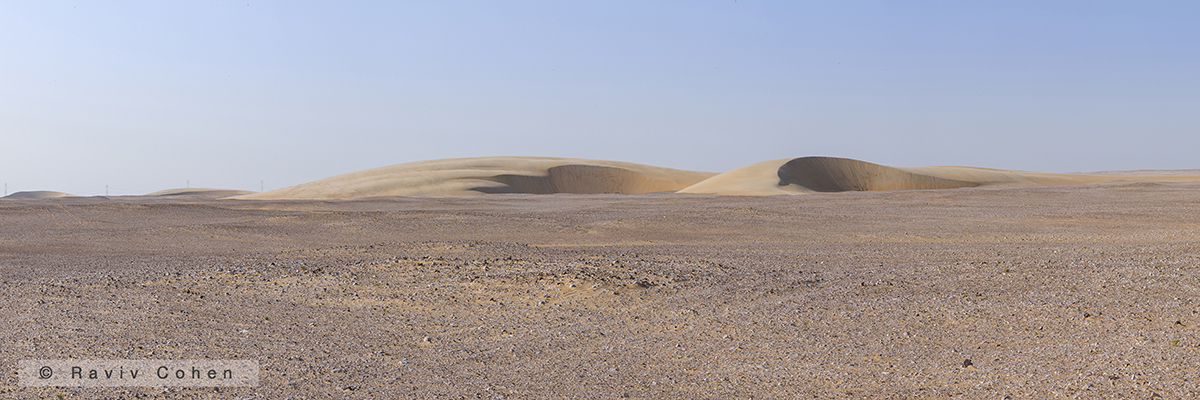
A striking feature of the Qatari terrestrial environment is the crescent-shaped sand dune, or Barchan. Barchan morphology is a byproduct of the unidirectional impact of Al Shamal winds, blowing sand onto the windward face. Sand passes through the top thin line of the crest, falling off to the leeward face, and on either side to the horns of the dune. Sand dunes may appear stationary, yet they actively travel, merge with one another and break off again. On average, Barchans may move about 10 m per year.
Temperature and UV light on the surface of the sand dune are significantly higher than inside the dune. Skink lizards, the only organism living exclusively inside sand dunes, avoid the scorching heat by swimming inside dunes, as other animals do by burrowing deep in the soil. Sand cats may form burrows at the base of sand dunes, yet unlike skinks, they may reside in any terrestrial ecosystem as long as the desert floor is made out of soft or sandy soil.
Skinks fall prey to animals inhabiting ecosystems in the vicinity of dunes, including the fox, owl, snake, sand cat and even other skinks when asserting territoriality. Other animals that live around dunes and seem to co-exist with skinks, are scorpions, geckos, camel spiders, multiple bird species and camels. Skinks prey on insects, and consume plants.
The base of sand dunes located on top of rocky desert in central Qatar, may be dominated by Cyperus conglomeratus, Helianthemum species, Cornulaca aucheri and multiple grass species. The plant community of sand dunes on top of inland and coastal sabkhat in the south, is enriched with halotolerant plants like Seidlitzia rosmarinus and Suaeda vermiculata, growing on all surfaces of the dune.
The sand dune microbiome is very diverse and equipped with genes for sporulation and dormancy, common adaptations of avoidance to extreme conditions, also observed in plant species that exist in environments like the desert.
Threats leading to the loss of dune ecosystems and skinks alike, include their southwestern migration by Al Shamal winds, which force them to fall off into the Arabian Gulf, as well as the extraction of dune sand for construction purposes.
© Chatziefthimiou AD. 2019. Terrestrial Environment: Sand Dunes. Qatar e-Nature.
Sources:
Edgell HS, 2006
Batanouny KH, 1981
Castilla AM et al, 2014
Batanouny KH, 1981
Norton J, 2009
Abdul Majid A et al, 2016
Louge MY et al, 2013







